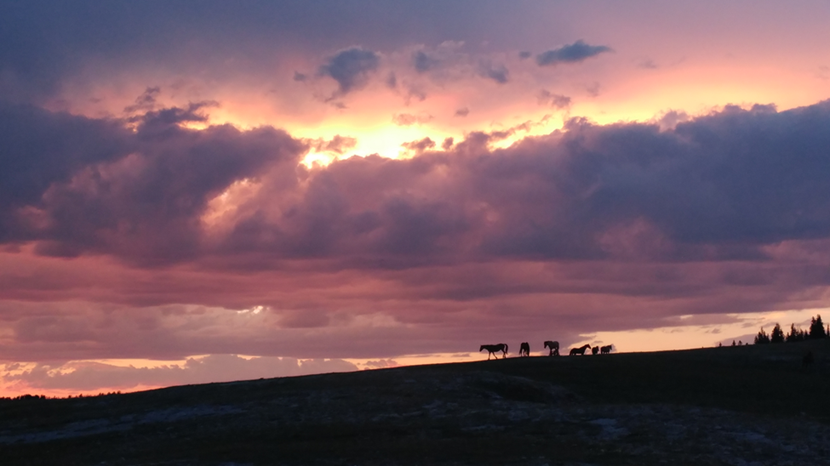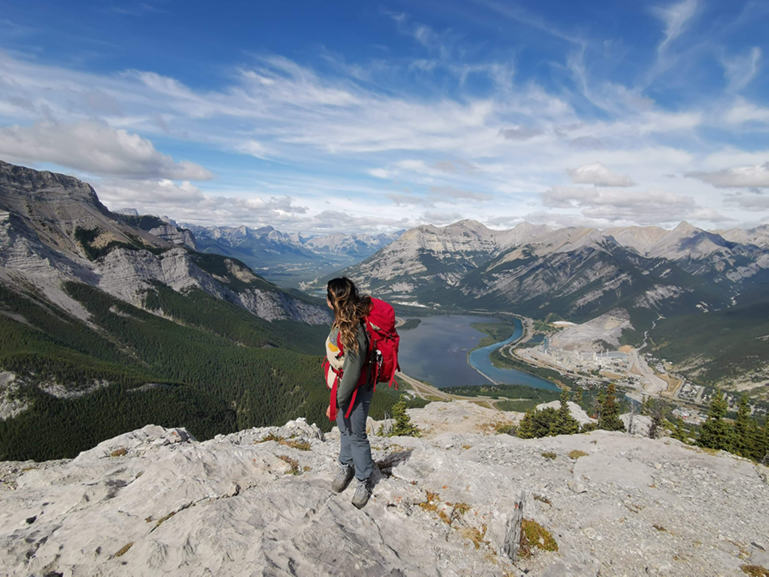Finding a place of growth through self-discovery
Growing up, I was never an outdoorsy person. My family lived in Jinju, South Korea, a mid-sized city in the south.
Perhaps I was too young to notice any nature, but my memories of Jinju mostly included backdrops of apartment clusters, holding my mother’s hand as we walked down the narrow streets, and feelings of joy as I ran into a moongujum, a place where you could find cute stationery, snacks — and my personal favourite — streetside arcade games.

Even when we immigrated to Canada, outdoor trips weren’t common in my family. We’d usually gather around the television in the evenings, watching our favourite Korean dramas and variety shows.
In my young adulthood, I played hours of a game called Crazy Arcade BnB, earning me a lifetime of wearing glasses from me staring at screens so much. Although I’m sure my parents weren’t pleased that I spent so much time indoors, I was consuming media which was helpful in retaining my Korean culture and language as an immigrant kid, so they didn’t push too much.
Outside of some bike riding and climbing trees with my friends, I was most comfortable indoors, living in the digital age, not caring so much for sun and physical activity.
My interest in the outdoors came to me through music. As a teenager, I had a red iPod Nano that my parents begrudgingly bought after endless begging and negotiating. That thing came with me everywhere; I was listening to music constantly, in my own little world as the rest of my family watched television and ate dinner together.
Stifled in our little apartment, I needed an escape, a place I could go to without actually moving. I would lie on my stomach, on our scratchy beige-gray carpet, not caring if the fibers left marks on my body as I closed my eyes and listened to my favourite songs.
Most of the songs were by Said the Whale, an indie-rock band from Vancouver. The scenery their lyrics painted, of getting lost in the woods or picking mountainside wildflowers, were very unfamiliar to me but I wanted nothing more to be out there. I pictured myself in the great outdoors, walking alongside my friends chanting, “What a fine life we are living!” just like the songs.
It wasn’t until summer 2017 that I went on my first big adventure. In my third year at the University of Guelph studying animal biology, I was accepted for a summer field course gathering data on wild horses in the Wyoming and Montana border.
With no horse or wilderness experience whatsoever, I wasn’t sure how I would fit into the environment there. Even as I was researching field gear and reading through outdoor travel blogs, it was difficult to find anyone in the ads and pictures that looked like me.
I felt a slow, sinking feeling; it left the impression that I didn’t belong and that I was better suited to look at these beautiful views through my screen, not in person.

Into Wyoming and Montana’s East Pryor Mountains
Arriving at our camp at our fieldsite in east Montana’s Pryor Mountains along the border with Wyoming, I simply could not believe my eyes.
My reward for trudging up well above 8000 feet in elevation was the most amazing scene. Amidst the rocky terrain were various wildflowers, creating a smattering of colour against the green, grey and brown.
It felt like the sun was right there, blazing above, just a touch away. What really stole my breath (besides the lack of oxygen up there) were the horses. Banded together, roaming lazily and idyllically as if they weren’t aware that they were in one of the most gorgeous places I’ve been.
My worries of whether I belonged up there were instantaneously gone. In all this space, all this beauty, there was room for me, too. I wasn’t just imagining being in this place anymore, I was living, breathing in it.
That experience changed the course of my life. After a month of studying those horses, traveling to Yellowstone National Park, and having multiple conversations with my fellow researchers, I realized that fieldwork, being in nature, and gathering data were things I loved doing.
Exploring the outdoors was like getting tattoos for me; once I started, I wanted more. I decided to go into research, specifically wildlife research, and was unbelievably lucky to be able to get into a Master’s program in Calgary, Alberta.
Lessons from Alberta
Using $60 borrowed from my supervisor, I bought my first pair of hiking shoes from Kijiji in June 2019.
With those shoes, I summited my first peak on the Eastern Slopes of the Rockies: South Pocaterra Ridge in Kananaskis Country. From that point, I began chasing mountain after mountain. I felt as though I was living my dream.
Surrounded by the beauty of the West, it didn’t matter that my legs ached every time I took a step forward, or that I could feel my body’s limitations in my struggled breathing — it was all a part of the journey.
Living in a new city, a new environment, I was constantly learning about and understanding my relationships with not only myself, but the people, land, and all living things around me. There was a reason why people felt so connected to the outdoors here, I thought. Being in it gave them time and space to reflect.
Quickly, hiking became a way for me to come into my body and work through troubling thoughts that I had put off.
It’s in the mountains where I learned more about the relationship that I have with myself and my community. It’s where I discovered my love for wildlife and conservation research. It’s where I began to explore more about my queer identity and became serious about facing my mental health struggles. This also became the place where I started to be vocal about my activism for equity, diversity, and inclusion issues to ensure a better place for my community to live.
After every climb or summit to the top, as the hair whipped into my face and I took in the stunning views the Eastern Slopes and Yellowstone to Yukon region has to offer, I always thought back to my roots. How far I’d come from the little girl in southeast Ontario, imagining mountains and oceans into the farmlands on the side of the 401 as she listened to her favourite west coast band.
Working for an organization that not only represents the region I love but advocates for the conservation of everything within it is such a privilege and joy for me now.
What else does this place have in store for me? What other mountains will I climb and what other lessons will I learn? How best can I continue speaking up for the places and people I love?
This place has shaped my career and identity without completely changing who I am and where I came from. For that, I am grateful, and looking forward to learning more.
This article was written by Chanwoori (Diana) Jeong. Chanwoori is one of Y2Y’s 2022 story gatherers. These four unique people are sharing personal stories, memories and places related to the special landscapes of Alberta’s Eastern Slopes, often perspectives that are underrepresented in mainstream media. Read other stories in this series.
We are grateful for the financial support provided by Alberta Ecotrust and The Calgary Foundation for our story gatherer series.


